Power outages are more than mere inconveniences-they interrupt daily life, infringe on infrastructure, and test the resilience of a community. Jefferson Parish and New Orleans have had their share of outages, with residents and businesses still reeling from the consequences. This blog goes on to explain what the causes behind the outages are and how they affect localities to an even greater extent. Furthermore, the article outlines more reliable future solutions being envisioned in the region. Whether you’re a local seeking answers or simply curious about the intricacies of the modern energy system, this article provides a thorough insight into the issues and strategies shaping the future of power supply in Jefferson Parish and New Orleans.
Overview of Power Outages in Jefferson Parish
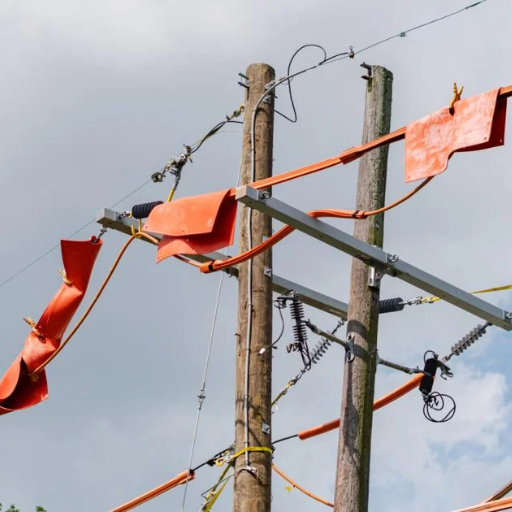
Power outages in Jefferson Parish can occur due to a combination of aging infrastructure, severe weather, and increased demands on the energy grid. Hurricanes and tropical storms batter power lines and substations, while extreme heat puts further strain on the system in peak usage times. Another factor contributing to service interruptions is the reliance on outdated equipment in certain areas. Some potential solutions on the horizon include infrastructure upgrades, tree-trimming programs near power lines, and other creative ideas, such as integrating renewable energy sources and enhancing grid resilience.
Definition and Types of Power Outages
A power outage or blackout is a cessation of the electrical power supply in a location. These interruptions can be short-lasting, while others can be prolonged, depending on the nature of the cause and the intensity of the problem. Power outages are typically categorized into three main types.
- Momentary Outages
A brief interruption of the power supply lasts only a few seconds to a few minutes. Causes may include incidental contact by tree limbs, birds, or squirrels; such interruptions are usually resolved by themselves due to protective overrides installed in the electrical grid.
- Brownouts
When the voltage levels fall below the accepted levels, lights dim, and an electrical device receives a lower level of power, etc. We call these conditions with insufficient voltage as brownouts. High demands for electricity or the overloading of the grid during peak periods may be probable causes of brownouts. During a heatwave, for example, brownouts occur when everyone turns on their air conditioning systems.
- Blackouts
Blackouts refer to total and prolonged power losses, typically resulting from equipment breakdowns, extreme weather conditions, or grid failures. Depending on the degree of damage done, ranging from a few hours to days, there are instances like the Northeastern Blackout in 2003, which served black power to over 50 million souls in the U.S. and Canada.
According to the 2022 report of the U.S. Energy Information Administration, an average American suffers four hours of power interruptions annually. This is a big jump from the previous decades, owing to an increase in energy demands and the growing concern of adverse weather events due to climate change. Since power outage incidents track the aging processes of power infrastructure, and extreme weather events are becoming more frequent, efforts to understand and mitigate power outages become even more critical.
Recent Trends in Power Outages in Louisiana
Power outages in Louisiana appear to be increasing, mainly due to aging infrastructure, rising energy consumption, and the growing impact of severe weather events, including hurricanes and storms.
Understanding the Impact on Residents in Jefferson Parish
Residents in Jefferson Parish face numerous challenges due to recurrent power outages. These impacts are disruptive and may have drastic effects on the fabric of life, health, and financial stability. Here are five essential impacts arising from power outages locally:
- Disruption to Daily Life
Dancing with darkness, residents find it impossible to use their crucial household appliances such as refrigerators, stoves, or air conditioning. Thus, they endure spoiled food, an uncomfortable indoor atmosphere, and general disruptions to their daily life.
- Health Risks
Power outages present severe health risks, especially to the elderly population or those already ill. Conversely, extended power outages can put those who rely on electrically powered medical devices or require the refrigeration of medicines, such as insulin, at risk.
- Economic Losses
Businesses suffer severe effects from power outages, including losses due to downtime, spoilage of inventory, and costs for backup power if available. Families also incur financial losses due to the costs of replacing spoiled food and compromised lodging arrangements during an extended outage.
- Educational Disruptions
For families with school-going children, power outages disrupt attendance at online learning platforms and facilities needed for education. Particularly in low-income regions where alternative resources are also not readily available, this effect is compounded.
- Safety Concerns Within the Community
Outages can handicap public safety as streetlights, security systems, and communication networks cease to exist. This reduces the likelihood of accidents and crime during periods of darkness and limited connectivity.
Addressing and mitigating these impacts should be given the utmost consideration to ensure the safety and well-being of Jefferson Parish residents.
Causes of Power Outages in the Area
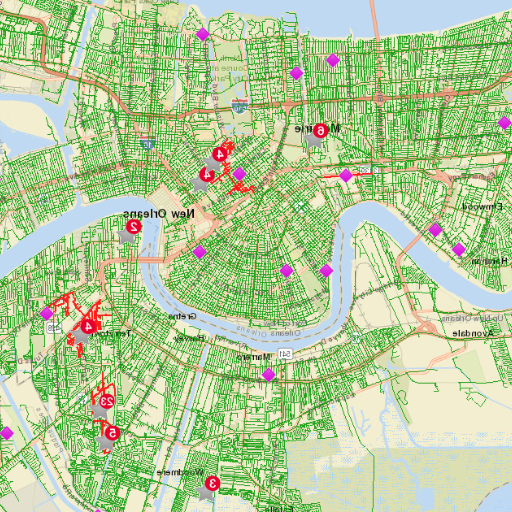
- Severe Weather Events
More often than not, storms with thunder, hurricanes, and high winds cause power outages when power lines and infrastructure are damaged.
- Fallen Trees and Debris
Trees and debris, especially during storms, can fall on power lines, disrupting the flow of electricity.
- Equipment Failure
Power outages also occur if equipment in the power grid is old and starts malfunctioning.
- Animal Interference
Squirrels or birds can come into contact with power equipment, resulting in short circuits.
- Human Activity
Any accidental damage from construction, vehicle collision with utility poles, or vandalism may cause power supply interruptions.
Underneath these causes lies the understanding for appropriately tackling and preventing future outages.
Natural Causes: Weather and Environmental Factors
Power outages are primarily caused by natural factors, such as weather and environmental extremes. Power grids are disrupted by natural factors, which can damage infrastructure or create unfavorable conditions, even hindering maintenance or operation. Some of the significant natural causes that generally affect power supply systems are:
- Storms:
Severe thunderstorms, hurricanes, and tornadoes bring strong winds with heavy rains and lightning strikes, often damaging power lines, transformers, and poles. Hurricanes accounted for 58% of major power outages in the United States between 2000 and 2019.
- Falling Trees:
Trees or branches can snap and fall onto power lines due to high winds or ice buildup, causing severe damage and outages.
- Flooding:
Floodwaters during storms or after rivers burst their banks can inundate substations and underground infrastructure, making repairs difficult and time-consuming.
- Extreme Heat:
Prolonged heat waves can cause equipment to overheat and increase electricity demand, potentially leading to system overload or failure.
- Snow and Ice:
Ice storms and heavy snowfall can place substantial loads on power lines and tree branches, causing them to snap or topple and resulting in grid disruptions.
Close monitoring of natural factors and their countermeasures can help mitigate both the risk and impact of weather-related power outages.
Infrastructure Issues: Aging Equipment and Maintenance
Aging infrastructure poses a significant challenge to power grid reliability worldwide. Being in operation for decades, many electrical systems are equipped with components that are either nearing or have already exceeded their set lifespans. For example, the Department of Energy states that approximately 70% of transmission lines and transformers in the United States are more than 25 years old, and 60% of circuit breakers have been in service for over 30 years. Such aged equipment is prone to failure, resulting in more outages, inefficiencies, and expensive repairs.
Budgets allocated for maintenance are often stretched too thin, thereby worsening the overall situation. A scarcity of funds may hardly allow for some much-needed upgrades or routine maintenance to take place, thereby exposing systems to the risk of breakdowns. The ASCE report put the U.S. electricity infrastructure investment gap estimate at $208 billion by 2029. Outdated systems and insufficient maintenance, on the other hand, breed interruptions and fragility in the global grid.
To meet these challenges, infrastructure modernization with state-of-the-art technology, including smart grids and monitoring systems, becomes imperative. Power system life could be significantly lengthened while reducing smaller risks if proactive maintenance, inspections, and equipment replacement are carried out. Moreover, integrating renewables and modernizing the grid is another path toward a stronger and more sustainable energy future.
Human Factors: Accidents and Vandalism
Accidents and vandalism are substantial threats to grid reliability. From my perspective, addressing these issues requires a combination of the above: preventive measures on one hand and rapid response systems on the other. For example, disseminating information to the general public about the consequences of tampering with power infrastructure would help combat vandalism. More serious security methods can also be employed. Likewise, one can minimize accidental damage and its effects by strengthening safety protocols and monitoring with state-of-the-art technology.
Current Restoration Efforts by Entergy
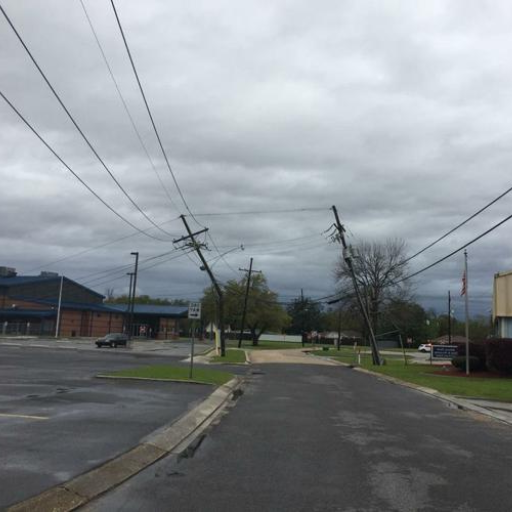
Entergy is working to restore power service quickly and safely. Crews are performing emergency repairs to damaged infrastructure, with critical facilities such as hospitals and emergency services being treated as a priority. The company utilizes advanced grid technology to expedite the process of locating outage areas and has dispatched extra crews from unaffected areas to facilitate faster repairs. They also keep the communities informed at regular intervals, ensuring transparency is maintained and customers do not feel they have been left out.
Updates on Restoration Progress in Jefferson Parish
Power has been restored, at last, for several residents of Jefferson Parish after outages and severe weather. The latest reports indicate over 90% of internet and electrical service have been restored to affected households and businesses in the Parish. Crews had to repair several power lines and substations damaged by high winds and floods, giving priority to critical infrastructure such as hospitals and emergency response centers.
Over 500 linemen and technical workers have been deployed to Jefferson Parish from the company, with reinforcements from adjacent regions. Outages are being identified quickly through advanced diagnostic tools that cover the entire parish, helping to speed up the repair process. Additionally, the vegetation management teams have been clearing fallen trees and other debris blocking the utility lines, with 70% of the impacted areas now removed as of this latest update.
For the remaining customers without power, restoration efforts are still ongoing, and they are expected to have full service restored within 24 to 48 hours. Updates are shared frequently on the company’s website and social media channels, ensuring transparency and responsiveness to customer concerns. Those affected are asked to report any outages that have yet to be addressed so that we can ensure all communities receive help without delay.
Challenges Faced by Restoration Crews
Power restoration after large-scale outages presents numerous challenges that can complicate and/or delay restoration efforts. Five significant challenges faced by the restoration crews are outlined below:
- Adverse Weather Conditions
Crews must work in adverse weather conditions, including heavy rains, strong winds, or extreme cold. These conditions not only slow down the work but also impose safety hazards on the workers.
- Road Accessibility
Fallen trees, floods on roads, or the accumulation of debris outside the gates can, theoretically, block the way of critical infrastructure, barring crews from reaching damage areas and equipment.
- Complex Repairs
Due to the age-old disproportional damage levels across power grids, transformers, power lines, and other infrastructure, methodical repairs may be required that necessitate considerable skill, heavy machinery, and, most importantly, time.
- Resources Limitations
A limited availability of personnel, equipment, or parts can slow down the restoration process, especially when an outage is too large and requires extensive coordination.
- Coordination Difficulties
Efficient communication and collaboration between utility companies, emergency response teams, and local authorities are crucial. Still, they can be challenging to maintain during an ongoing emergency, which can slow down the entire process.
Estimated Timelines for Power Restoration
The restoration timeline varies depending on the size of the outage, the reasons for it, and the resources available. PricewaterhouseCoopers elucidates some scenarios and their generally accepted time frames:
- Small-Scale Outages (Localized Areas)
Restoration of minor disturbances caused by a fallen branch or a blown transformer usually takes a few hours to 1 day. Being more local and having the potential to be quickly fixed, utility companies typically focus their efforts on these issues.
- Moderate Outages (Neighborhoods or Towns)
Outages affecting multiple neighborhoods or towns, a greater level of failure in equipment, or moderate weather events will take 1 to 3 days for power restoration. In those restoration cases, there will be detailed inspections, repairs to main power lines, and partial reconnection of the power grid.
- Severe Weather-Disruption Level Outages
Hurricanes, tornadoes, and ice storms can inflict widespread damage on infrastructure. Based on past data gathered by agencies like FEMA and recent disaster statistics, restoration of power after massive storm damage can range from 7 to 14 days, depending on the degree of damage, adverse weather conditions, and availability of repair crews.
- Large-Scale Disasters (Hurricanes, Wildfires, Earthquakes)
Catastrophic events affecting an entire region create additional challenges, particularly due to the destruction of substations and areas that are inaccessible due to flooding or debris. Based on recent events such as Hurricane Ida (2021), restoration times for large-scale disasters may vary from weeks to several months, depending on the complexity of the repairs and the affected area.
- Grid-Wide Failures or Cyber Attacks
A massive grid failure or a cyber attack can lead to disruptions in services for millions. Partial services may be restored 1 to 7 days after quick assessments and brief fixes; however, complete restoration will likely take weeks to months, during which the authorities will need to identify the actual cause, repair damaged systems, and implement security upgrades.
There is Communication that agencies routinely provide progress updates and sometimes employ online outage maps, like PG&E and Duke Energy, to inform customers about timelines and ongoing repair locations. Technologies such as smart grids and predictive analytics are therefore considered instrumental in reducing these timelines even further through improved coordination and enhanced response efficiency.
Tips for Residents During Power Outages
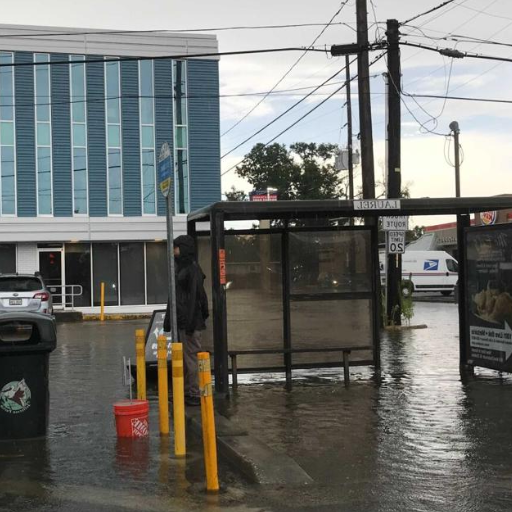
- Stay Informed
Monitor official updates issued by your utility company through their website, app, or social media channel. If outage maps are available, use them to track the restoration process.
- Conserve Power
Turn off or unplug unnecessary equipment and appliances to prevent power surges when electricity is restored.
- Prepare Emergency Supplies
Flashlight, batteries, bottled water, non-perishable food, a first aid kit, and any other essentials for emergencies.
- Ensure Safe Generator Use
Place the generator outdoors and away from windows to prevent carbon monoxide poisoning.
- Maintain Communication
Keep your phone charged or have a portable power bank ready until you receive emergency alerts and critical updates.
- Keep Refrigeration Closed
Refrigerators and freezers should be opened as little as possible to maintain the temperature and keep the food intact.
Such advice helps residents in safety and preparation until power restoration.
Safety Tips for Staying Prepared
- Stock Emergency Supplies
Ensure an emergency kit is prepared, containing essential supplies such as water, non-perishable food, first aid supplies, flashlights, spare batteries, and any necessary medications. FEMA recommends having at least one gallon of water per person per day for a minimum of three days, as well as a non-perishable food supply that will sustain them for about three days.
- Secure Backup Power Sources
Consider buying a generator or battery backup systems to keep power to critical devices during an outage. When operating a generator, position it outdoors at least 20 feet away from doors and windows to prevent carbon monoxide poisoning. Unfortunately, this affects millions of people worldwide each year.
- Create a Communication Plan
Establish a family communication plan that outlines the protocol for staying in touch in the event of an emergency. The Red Cross states that having a meeting location anda mutual contact list will facilitate coordination even if phone lines are down or no electricity is available.
- Stay Updated on Emergency Alerts
Sign up for local emergency alert systems or download apps such as FEMA or NOAA Weather Radio for updates of any weather changes or situations developing in your area.
- Protect Important Documents
Keep critical documents such as IDs, insurance policies, birth certificates, and financial information inside a waterproof and fireproof container. Proceed to back up these crucial files digitally to allow access even during adverse conditions.
- Prepare Your Home
Cut trees and clear debris in the vicinity of your property to avoid hazards that may develop during storms. Conduct a thorough inspection for any structural weaknesses within your home and reinforce the major vulnerable areas, such as windows, doors, and your roof, to withstand extreme weather events.
With the installation of such preparedness measures, the resilience of individuals and families against power outages or natural disasters can be significantly increased.
How to Preserve Food and Water During Outages
- Store Non-Perishable Food Items
Stock up on non-perishables, such as canned foods, dried fruits, nuts, and granola bars. These items maintain their quality for extended periods and can provide nutrition during prolonged interruptions.
- Store Water in Several Containers
It should be one gallon per person per day, stored for a minimum of three days. Store water in food-grade containers, ensuring their lids are airtight to prevent contamination.
- Set Up a Cooler and Fill It with Ice Packs
To keep perishables such as dairy and meats temporarily chilled, set up a cooler filled with ice packs in anticipation of a power outage. Minimize opening the cooler to keep temperatures as low as possible.
- Invest in Food Preservation Equipment
Vacuum sealing and dehydration are two food preservation processes that enable more extended storage, making them worthy food preservation options to consider. Dehydrated foods are compact and retain most of their nutritional value if stored properly.
- Purify Water with a Filter and Tablets
If clean water becomes unavailable, remember to carry along portable water filters or water purification tablets. These allow one to turn contaminated water into safe water, thus limiting the chances of contracting waterborne diseases in emergencies.
Communication Strategies: Staying Informed
During emergencies, it is paramount to stay informed, so I make sure to keep a battery-powered or hand-crank radio for news and weather updates. I also keep a list of trusted news agencies and subscribe to emergency alert systems that help notify me in time. Making great connections with local community networks or groups is a level of information swap that enables me to stay updated on the main happenings.
Resources Available for Assistance
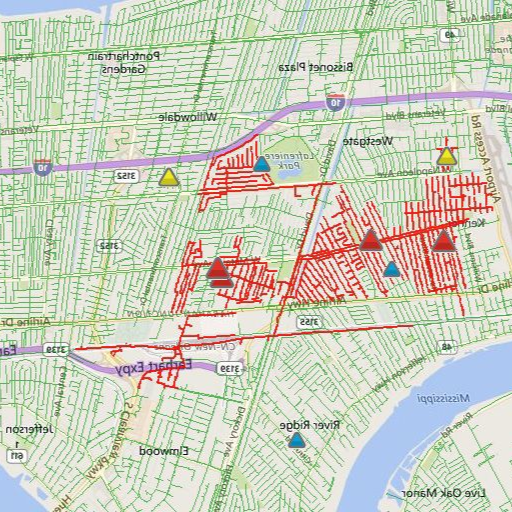
- Local Emergency Services – Call for your local police, fire, or medical services in an emergency. Dial 911 in an emergency for immediate assistance in the United States.
- American Red Cross – Provides disaster response, shelter, food, and emotional support. Go to their website or call 1-800-RED-CROSS for assistance.
- FEMA-Federal Emergency Management Agency-Gives disaster response and recovery services. Visit its website at www.fema.gov or call the Disaster Assistance Helpline at 1-800-621-FEMA.
- Community Centers and Shelters – Aid is also offered by community centers, which provide temporary shelter, food, and basic supplies in case of an emergency. Check with your city directory or the local government website.
- National Weather Service (NWS) – Gives current weather alerts and safety information. Receive notifications through a weather radio or from their official web page.
- Emergency Alert Systems – Subscribe to alert systems, such as Wireless Emergency Alerts (WEA), to receive instant alerts directly on your phone.
Community Resources for Affected Residents
Various community resources are available to support and assist residents affected by emergencies. Some opportunities are listed below, coupled with additional information on how these resources can help:
- American Red Cross
The American Red Cross has national operations to provide disaster relief through shelter, food, and health services. They reportedly handled over 45,000 disaster responses in the U.S. alone in the last year, helping millions. Locals can seek services through their local chapters via redcross.org.
- Federal Emergency Management Agency (FEMA)
FEMA also operates DRCs and aid programs to help families in recovery. You can apply for disaster assistance or track claims at disasterassistance.gov. FEMA, for instance, distributed more than $3.5 billion in disaster assistance funds in 2022 to households and communities affected by disasters.
- Local Food Banks
Food banks, such as those under Feeding America, play a crucial role in disaster recovery efforts, ensuring that healthy meals are provided. According to Feeding America, the food bank network distributes more than 6.6 billion meals annually, with a peak in response to crises. The Food Bank Locator on their website, feedingamerica.org, can be used to find a food bank near you.
- United Way’s 211 Service
The 211 number will connect residents to local services, including housing assistance, mental health support, emergency aid, and many others. There are approximately 20 million calls each year to the 211 networks, demonstrating its reliability as a resource during emergencies. For information or support, go to 211.org.
- Salvation Army
They provide temporary housing, disaster relief, and financial counseling to individuals and families affected. They assist about 23 million people globally each year. Visit their website at salvationarmyusa.org for disaster response assistance or to find locations near you.
- Healthcare/Assistance Programs
Emergencies prompt the establishment of crisis response units by local hospitals and healthcare providers. Community-based free clinics or low-cost services might waive fees for the uninsured. Use resources from the National Association of Free & Charitable Clinics (nafcclinics.org) to locate a clinic nearby.
In conjunction with your local government and emergency services, these organizations provide much-needed lifelines in times of crisis. Familiarize yourself with the services available in your area, and prepare by compiling a list of their contact information.
Emergency Services and Support Networks
Emergency services and support networks step in to help those in urgent need due to situations like natural disasters, medical emergencies, or sudden financial crises. Such services might entail emergency medical care, food banks, temporary shelter, and mental health hotlines. According to the Federal Emergency Management Agency (FEMA), over 6,000 emergency food programs and shelters exist across the United States to assist individuals and families in need.
At the same time, the 211 helpline, run by the United Way, serves as a major local resource for connecting people with support systems. More than 25 million calls are made to this helpline every year, primarily regarding questions about housing assistance, disaster recovery programs, or other social services. Emergency response services are available 24 hours a day, seven days a week, via 911, for urgent situations that require the swift intervention of police, fire, or ambulance personnel.
From the online side, “Crisis Response” tools will keep you informed with real-time updates about disaster areas, evacuation routes, and emergency shelters. The expanded network allows one to have a shoo-in for a solid support system, depending on the situation. So, if you don’t know of any during a quiet time, learn about some, write down a few hotlines or apps, and rely on Google Search to keep you updated when the going gets tough.
Government Assistance Programs in Louisiana
In Louisiana, there are several welfare schemes to help its citizens in times of need. They include help for medical treatment, food, shelter, employment, and recovery from disasters. These are five essential welfare schemes operative in Louisiana:
- Louisiana Supplemental Nutrition Assistance Program (SNAP)
It helps needy families purchase nutritious food. Eligible participants receive SNAP benefits via an Electronic Benefit Transfer (EBT) card, which can be used to purchase groceries from participating retail outlets.
- Louisiana Medicaid Program
Medicaid covers the health needs of eligible low-income persons, families, and pregnant women, as well as disabled residents. It covers doctor visits, hospital care, pharmaceuticals, and many other services.
- Temporary Assistance for Needy Families (TANF)
TANF provides financial assistance to needy families with children, enabling them to become self-sufficient. The program also provides job training, child care assistance, and educational programs.
- Louisiana Housing Authority Programs
Louisiana Housing Authority funds programs to house people who are homeless or have difficulties with housing costs. Rental assistance vouchers and an affordable housing development initiative are some of them.
- Disaster Supplemental Nutrition Assistance Program (DSNAP)
DSNAP activates during declared disasters to provide food assistance to residents affected by emergencies such as hurricanes, floods, and other crises. It provides temporary benefits for families who ordinarily may not qualify for SNAP.
Each program offers very targeted assistance so that Louisiana residents at least have the help they may ever need in difficult times.
References
-
Brookings Institution Report: A detailed analysis of the impact on Jefferson Parish and New Orleans East, discussing decentralization and development. Read the report here.
-
Missouri University of Science and Technology: A document on the development of the New Orleans flood protection system, including references to Jefferson Parish. Access the document here.
-
Louisiana State University (LSU) Report: A comprehensive history of New Orleans flood protection, with specific mentions of Jefferson Parish’s drainage systems. View the report here.
Frequently Asked Questions (FAQ)
What is the current power outage status in Jefferson Parish?
The current power outage status in Jefferson Parish indicates that many customers are without power due to a recent storm. Entergy personnel are actively working to restore service to affected areas, including Elmwood and Harahan. For the latest updates, residents can refer to the outage map provided by Entergy.
How can I find the outage map for my area in Louisiana?
You can find the outage map for Jefferson Parish and surrounding areas on the Entergy website. This map provides real-time updates on power outages, showing which neighborhoods are currently affected and the estimated restoration times.
What should I do during a power outage in Jefferson Parish?
During a power outage in Jefferson Parish, residents are advised to stay safe by avoiding downed power lines and using flashlights instead of candles. It’s also essential to keep refrigerators and freezers closed to maintain the freshness of food. Check local news sources like nola.com for updates on the situation.
How long can customers expect to be without power in Jefferson Parish?
The duration of power outages in Jefferson Parish can vary significantly based on the extent of the damage caused by storms. On average, customers may be without power for several hours to over 24 hours. Entergy provides updates on estimated restoration times through their customer service channels.
Are there any specific areas in Lafourche Parish affected by the outage?
Yes, some areas in Lafourche Parish have reported outages due to the same storm system impacting Jefferson Parish. Residents in these areas should check the Entergy outage map for specific information regarding their location and power status.
What is the forecast for the upcoming week in Jefferson Parish?
The forecast for the upcoming week in Jefferson Parish includes potential rain and thunderstorms, which may result in additional power outages. Residents are encouraged to stay informed about weather conditions and prepare for possible disruptions to service.
Who should I contact if I have concerns about my power service?
If you have concerns about your power service in Jefferson Parish, you should contact Entergy customer service directly. They can provide information regarding outages, expected restoration times, and any other inquiries you may have.
What measures are local officials taking to address the outages?
Local officials, including Jefferson Parish Councilman Scott Walker, are working closely with Entergy to address the outages and ensure that all affected customers receive prompt assistance. They are also coordinating resources to manage flooding and other storm-related issues.







